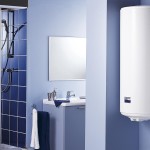Do-it-yourself installation of a water heater is a laborious process, but due to the lack of hot water in the house, it is impossible to fully take a bath or shower, or work in the kitchen.
Today, in retail outlets, you can see water heating devices that are completely different in type and size. And it is sometimes very difficult to find your way in a large assortment.
Types of water heaters
Such devices are either storage or flow-through type. Both options have their own advantages and disadvantages.
Flow devices
The water in this equipment is heated by passing through the apparatus. In this case, the heating time of the flow-through device is very short, within 30 seconds. The advantage of this technique is its size. The connection of this device can be made in any place equipped with water and electricity supply. But this unit consumes a lot of electricity. To take a shower normally, you will need to connect a water heater with a capacity of at least 6 kW. That is, to start, you will need to install a separate wiring.
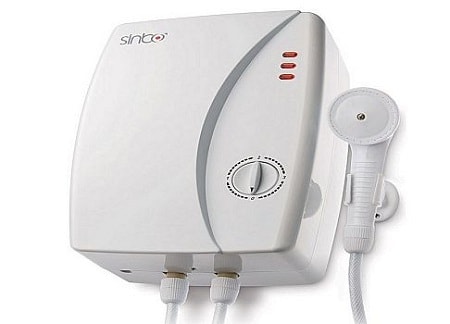
Storage water heaters
The principle of operation of this device is somewhat different from its flow-through counterpart. The water fills the large tank and gradually heats up in it. The positive quality of the storage device is its relatively low power consumption. Even for a 200 liter tank, only 2 kW is enough. The body of such a water heater has good thermal insulation, due to which the water in the tank is cooled for a very long time.
The choice of the storage unit is due to the calculation of the water consumption for the number of people in the family. For three people, it is enough to purchase a product with a capacity of 150 liters. The negative feature of such a device is the operating time. It will not work to quickly heat water in it.
See also:
- Top 6 Hotpoint-Ariston Water Heaters
- 8 best Zanussi water heaters of 2019
- 8 best Thermex water heaters of 2019
- 10 best Timberk water heaters of 2019
- 10 best Gorenje water heaters of 2019
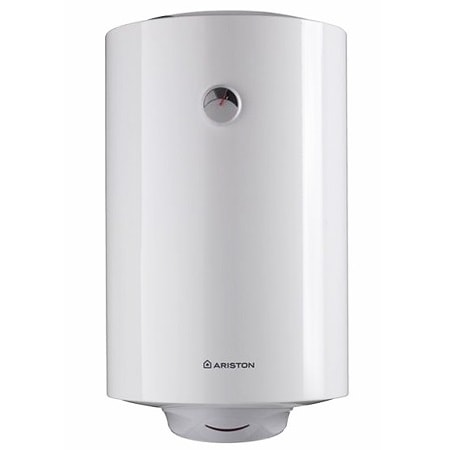
Gas, electric or indirect
Each type of water heater is convenient in its own way.
Electric
Most consumers prefer the electric option.
This is due to several factors:
- If the installation is carried out in a country house or in a rural area where there are problems with the gas supply, such a device is best suited.
- Today, electricity is the most affordable type of energy carrier.
- Do-it-yourself installation of a water heater is much easier.
- The device operates from a 220 V socket.
- There are no connection problems in these devices.
![]() See also - Rating of the best electric storage water heaters of 2019
See also - Rating of the best electric storage water heaters of 2019
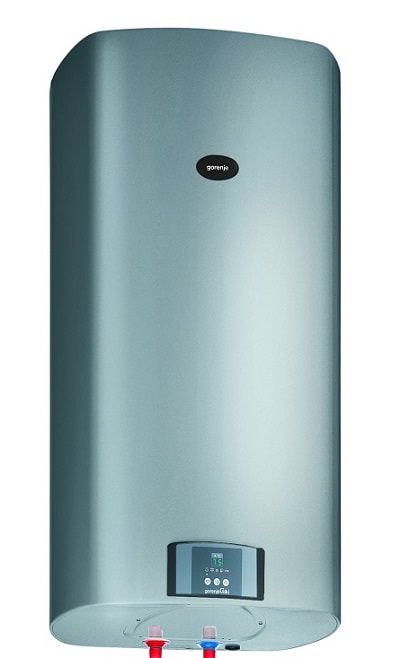
Gas
They are less popular, as they work only if there is a main gas supply. Its operation will be cheaper because the price of gas is lower than that of electricity. But connecting on your own will not work. This should only be done by a specialized company.
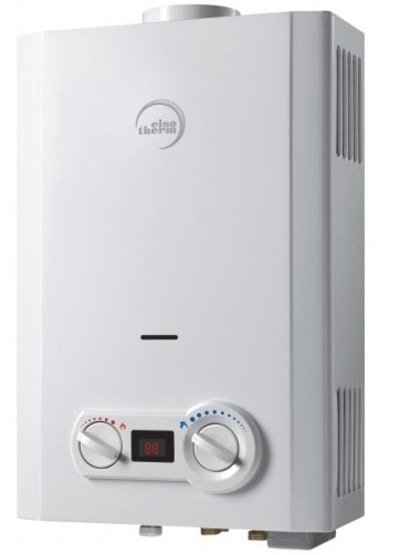
Indirect
Such water heaters are more suitable for private houses. The water in the storage tank of the device is heated by the boiler. And that, in turn, is heated by burning gas or solid fuel.
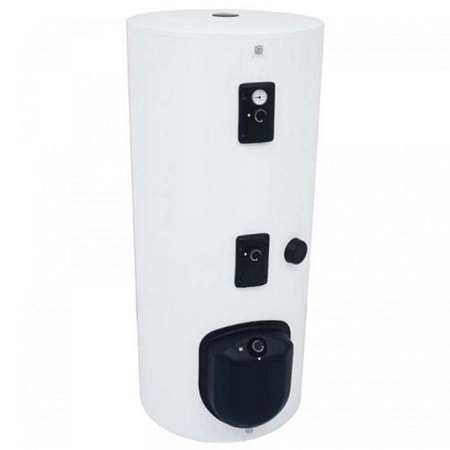
Installation of a water heater
As a rule, the installation of both a flow-through and a storage device is carried out in a bathroom. Storage water heaters should be located on a load-bearing wall. As with filled tanks they are heavy. Another point that should be taken into account when starting up the equipment is the distance from the water heater to the outlet tap. This interval should be as short as possible. Compliance with this condition will reduce the heat loss of water.
Installation will require:
- drill;
- screwdriver;
- self-tapping screws;
- screwdriver;
- pliers;
- wrench;
- dowels;
- copper two-core cable;
- plastic pipe.
![]() See also - Gas water heater or boiler - which is better to choose?
See also - Gas water heater or boiler - which is better to choose?
Water heater installation process
- At the selected place, brackets are attached to the wall using self-tapping screws. A water heater is hung on them. The main thing is that it is correctly exposed. That is, there should be no distortions or displacements.
- The next step involves installing the device to the power line. The device of the storage device allows this process to be carried out in a simplified version than when installing a flow-through device. This is due to the fact that the storage unit only works from time to time, which means that the load on the wiring is less. In a flow-through unit, water heats up instantly, therefore, the current must be large. You cannot plug it into an ordinary outlet, as it simply will not stand it. For such a device, it is recommended to use an individual line from the shield. It is best to entrust this installation to specialists.
- Next, a connection to the water supply is made. Before this work, you should turn off the water in the house and release excess pressure (for this, you just need to open a tap). Then a shut-off valve must be installed on the water pipe. If the equipment ever needs to be repaired, this valve can be used to shut off the water. Next, there is the installation of tees. If the water quality is desired, it is worth installing filters. After that, at the cold water inlet, the safety valve must be screwed onto the device. It is necessary to relieve pressure in the water heater if necessary. Further, between the tees and the device, plastic pipes are installed. A special nozzle included in the water heater kit is screwed to the outlet pipe. The tightness of the joints is fixed using plastic or rubber cuffs.
When the connection to the water supply is made, it should be checked for leaks. For this purpose, you need to open the hot water supply tap from the device and the cold tap from the water supply. When the tank is full and water flows from the tap, you need to turn off the tap and check the connections for leaks.
Do-it-yourself installation of a water heater is only worthwhile if you have experience in plumbing work. Otherwise, it is best to leave this job to specialists.
See also:

